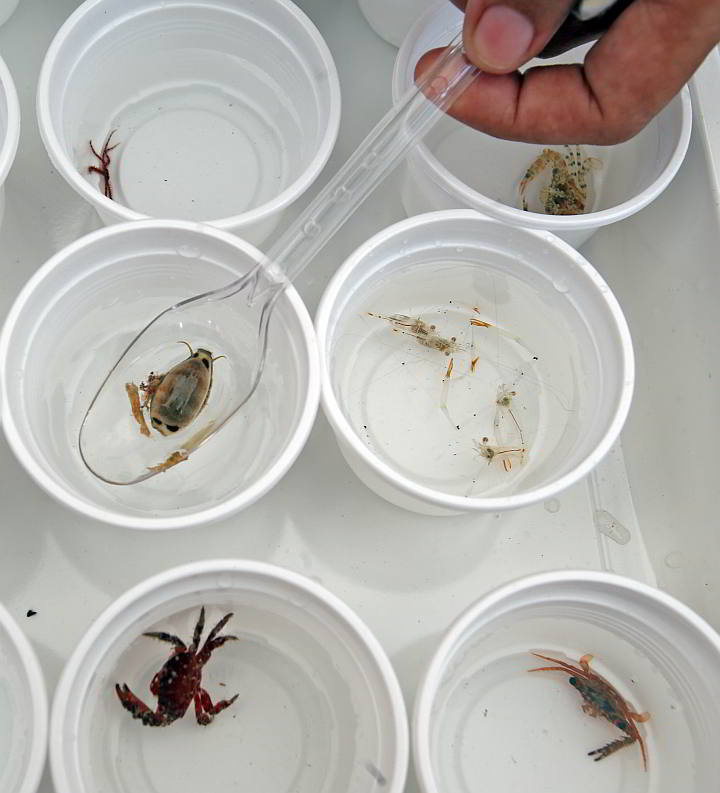
Different marine organisms found in the seabed of the marine sanctuary in barangay Alegria in Cordova show the site is recovering after years of destruction by blast fishing. The tiny fish, crabs and other species were retrieved from an underwater device called the Autonomous Reef Monitoring Structure. (CDN PHOTO/ JUNJIE MENDOZA)
Even if it’s not teeming with marine life, the marine sanctuary in barangay Alegria, Cordova town is showing signs of recovery.
Small fish, crabs and tiny organisms too small to see with the naked eye, were recovered yesterday from a box-like device of metal plates hauled from the seabed where it had been placed a year ago for research.
The Autonomous Reef Monitoring Structure at the bottom of the Alegria Marine Sanctuary in the eastern side of Cordova. (CONTRIBUTED PHOTO/ DENR-7)
The device, called the Autonomous Reef Monitoring Structure (ARMS) is the only one in Visayas and Mindanao.
The reef site in southeast Cordova facing Bohol was previously damaged by dynamite fishing. (This area is not the site being planned for reclamation by the Cordova municipal government.)
“We retrieved quite a number of species, small species that are often unnoticed and unappreciated by ordinary individuals. This shows the diversity of our marine ecosystem and today we learned that the one in Cordova is healthy,” said Criselda Castor of the Coastal and Marine Division of the Biodiversity Management Bureau (BMB).
BMB and DENR-7 divers retrieve the Autonomous Reef Monitoring Structure. (CONTRIBUTED PHOTO/ DENR)
However, it would take data from six ARMS to reach a conclusion about the marine health in the entire coastal town of Cordova, she said.
If there are tiny species at the sea bottom, it means that bigger species above it have more to eat, said Vicente Calizar.
Vincent Calizar of DENR-7 heads the retrieval of the device from the reef after it was deployed for almost a year in Alegria marine sanctuary. (CDN PHOTO/ JUNJIE MENDOZA)
“The reef is starting to recover,” said Mario Aragao, chief of the DENR conservation division.
In the Philippines, only four reef areas are being monitored through ARMS, a device donated by the National Oceanic and Atmospheric Administration (NOOA) for the Pacific islands.
The other areas are Corregidor island in Cavite, Snake Island in Palawan, and Camiguin in Misamis Oriental.
Castro said the device is used to assess the diversity, distribution, abundance, and community structure of the cryptofauna community – the most diverse community of organisms on a coral reef.
Each device cost P35,000. Calizar said he hopes the Department of Science and Technology could replicate the unit. The device will be placed back in the sea on June 15 and retrieved two years after.